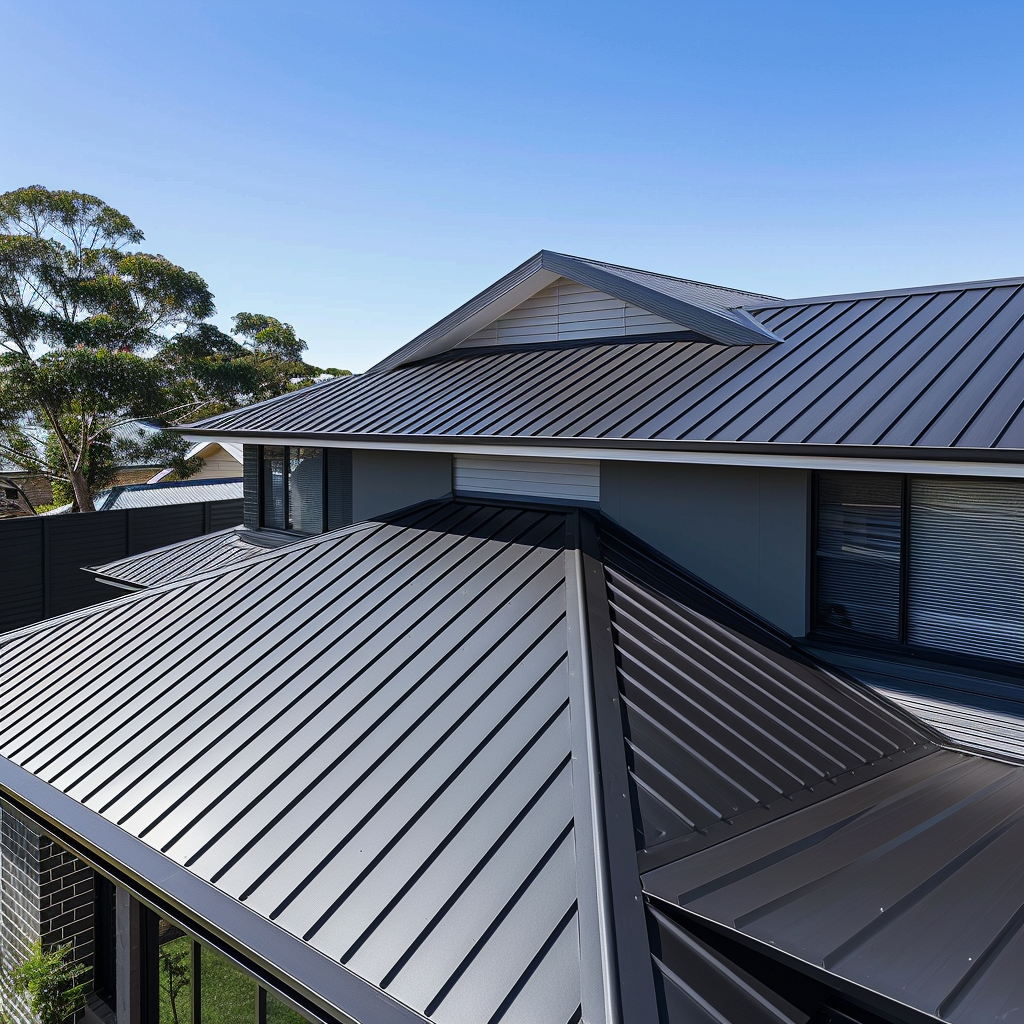
LANDCONNECT — 25 March 2024
New Home, New Power: The Ultimate Powerpoint Guide
Your one stop shop for all things powerpoints and new homes!
Welcome, new homeowners and homebuilders, to an essential guide on electrical powerpoints! As you step into the adventure of building or settling into your new home, understanding the world of powerpoints is key. These aren’t just fixtures in your walls; they’re the vital connectors that power up your daily life.
From their basic forms to today’s high-tech versions, powerpoints have grown into indispensable, efficient, and smart elements of any home. This guide dives deep into everything you need to know about powerpoints, covering a range of topics from choosing the right types to safe installation practices, and embracing the latest technological innovations. It’s designed not just for professionals but to empower you, as a homeowner or builder, with the knowledge to make informed decisions for your modern living space.
Types and Varieties of Electrical Powerpoints
Let’s explore the diverse universe of electrical powerpoints, a.k.a. outlets. It’s not just about plugging in; it’s about finding the right fit for every device and setting. Here’s the rundown:
- Standard Powerpoints: These are your go-to outlets, handling a broad spectrum of devices with ease.
- Ground Fault Circuit Interrupter (GFCI) Outlets: Safety first! GFCIs are the guardians against electric shocks in moist areas like bathrooms and kitchens.
- USB Outlets: Modern life demands modern solutions. USB outlets are here to power up your phones and tablets, side-by-side with traditional plugs.
- Smart Outlets: Welcome to the future. Control your devices remotely, track energy use, and even schedule your electronics with these high-tech outlets.
- Specialized Powerpoints: Got unique power needs? There’s an outlet for that, whether it’s for heavy-duty appliances or high-powered equipment.
Each type of powerpoint serves a unique purpose and is designed with specific safety features and functionalities. When choosing powerpoints for installation, consider the intended use, the location, and the types of devices you’ll be powering.
Safe Installation Practices for Electrical Powerpoints
It’s important to note that electrical powerpoint installation should only be undertaken by trained and licensed electricians. While it’s useful for homeowners to understand the process, this work involves significant risk and requires professional expertise. Here’s an overview of the workflow typically followed by professionals:
- Professional Assessment: Electricians start by assessing the installation site, understanding wiring requirements, and planning the installation according to safety standards.
- Circuit Breaker Management: Trained electricians always ensure the power is turned off at the circuit breaker before starting. This is a critical safety measure to prevent electric shock.
- Specialized Tools and Equipment: Professionals use a range of specialized tools, including voltage testers, insulated screwdrivers, wire strippers, and pliers, all designed for safe electrical work.
- Adherence to Wiring Standards: Electricians follow strict wiring guidelines specific to each type of powerpoint, adhering to national and local electrical codes.
- Secure and Precise Connections: Ensuring all wires are securely connected to the powerpoint’s terminals and that the unit is properly mounted to the wall or other surfaces.
- Testing and Verification: After installation, electricians perform thorough testing to ensure the powerpoint is functioning correctly and safely.
- Safety Gear and Precautions: Professional electricians always wear appropriate safety gear, including gloves and safety glasses, and take all necessary precautions.
Remember, DIY electrical work can be extremely dangerous. Always consult with a licensed electrician for any electrical installations or modifications in your home or business.
Technological Advancements in Electrical Powerpoints
The world of electrical powerpoints has seen remarkable technological advancements, making them not just sources of power but smart, integral parts of our connected homes. Let’s explore these developments in more depth, offering practical tips and interesting facts for homeowners considering an upgrade.
- Smart Outlets: These are the game-changers in home automation. Smart outlets allow you to control appliances remotely via smartphone apps or voice commands (think Alexa or Google Home). They’re perfect for those ‘Did I turn it off?’ moments, offering peace of mind when you’re away from home. They can also help reduce energy consumption by allowing you to turn off standby power to devices not in use. For instance, you could schedule your coffee maker or lamps to turn on and off at specific times, adding both convenience and energy efficiency.
- Energy-Efficient Designs: Newer powerpoint models are engineered to be more energy-efficient. Look for outlets with standby modes that cut power to the plug when not in use, helping to reduce your home’s phantom load — the energy consumed by electronics when they’re turned off but still plugged in. This can account for up to 10% of a household’s energy use. By installing energy-efficient outlets, you can make a significant dent in your energy bills.
- Enhanced Safety Features: Safety is paramount in electrical design. Modern outlets now come with improved GFCI (Ground Fault Circuit Interrupter) and AFCI (Arc-Fault Circuit Interrupter) capabilities. GFCI outlets are crucial in wet areas like bathrooms and kitchens, as they protect against electric shock. AFCI outlets, on the other hand, prevent electrical fires by detecting and interrupting arc faults. These advanced safety features are particularly important in older homes where wiring might not have been updated.
- USB and Multi-Use Outlets: The increasing demand for USB charging has led to the development of outlets that include built-in USB ports. These are particularly handy for charging phones, tablets, and other USB-powered devices without needing an adapter. Some models even offer USB-C ports for newer devices. This means fewer bulky adapters and a more streamlined charging station in your home.
- Aesthetic and Customizable Designs: Homeowners no longer have to settle for standard beige or white outlets. The market now offers a variety of colors, finishes, and styles to match any decor. You can find outlets that blend seamlessly with your wall color or make a statement with a contrasting design. Some even come with customizable faceplates that can be changed as your style evolves.
- Automated Systems Integration: For the tech-savvy homeowner, modern outlets can be integrated into broader home automation systems. This means your outlets can communicate with other smart devices in your home, creating a cohesive, automated environment. For example, your smart thermostat can trigger a fan plugged into a smart outlet to turn on when a certain temperature is reached.
When considering these technological advancements for your home, it’s important to:
- Assess your current and future needs: Think about which devices you use regularly and how smart outlets could add convenience or energy savings.
- Consult with a professional: Especially when dealing with smart or high-tech outlets, it’s advisable to get expert advice to ensure compatibility with your home’s electrical system and other smart devices.
- Consider the investment vs. return: While these advancements can offer increased convenience and safety, weigh the initial cost against the potential energy savings and enhanced home value.
By embracing these technological advancements, homeowners can not only improve the functionality and safety of their powerpoints but also step into a more connected and efficient future.
Powerpoint Placement and Safety
Strategic placement of powerpoints is crucial for maximizing functionality while ensuring safety. Let’s delve deeper into each aspect to provide you with practical, useful tips and relevant facts:
- Avoiding Water Sources: Water and electricity are a dangerous mix. When placing powerpoints in areas like kitchens and bathrooms, ensure they are at least several feet away from water sources like sinks, showers, or bathtubs. For added safety, use GFCI outlets in these areas. They are designed to prevent electric shock by cutting off power if moisture is detected. For instance, in kitchens, it’s advisable to install powerpoints above the countertop level, away from where water might splash.
- Accessibility: The goal here is to ensure that outlets are convenient but not obstructive. Place them in locations where you’re likely to use appliances, but where cords won’t create a trip hazard. For example, in living rooms, consider placing outlets near where you might place a couch or a reading chair for easy access to charging ports. However, avoid placing them where furniture will sit directly against them, as this can bend cords and lead to wear and tear or even fire hazards.
- Height Considerations: This is about safety, especially in homes with children. Standard practice is to install outlets at least 12 inches from the floor to prevent them from being too accessible to young children. However, you can also opt for higher placements or install tamper-resistant receptacles that are harder for children to interfere with. In workspaces, consider ergonomics – placing outlets at desk height can reduce the need to bend over and plug in devices, making the space more comfortable and efficient.
- Cord Management: Long cords can be a tripping hazard and can also lead to electrical fires if damaged. When planning powerpoint placement, think about where you’ll place appliances and how far they are from the outlet. Use cord management solutions like clips or ties to keep cords organized and out of walkways. Additionally, consider the aesthetics – outlets placed strategically can help hide cords behind furniture, maintaining a clean and organized look in your space.
Remember, the ultimate goal is to balance the practical needs of powering devices with maintaining a safe, efficient, and aesthetically pleasing environment. Proper powerpoint placement, coupled with safe installation and use, can significantly enhance both the functionality and safety of any space.
Choosing the Right Powerpoint for Your Environment
Selecting the appropriate electrical powerpoint for your specific environment is vital for both functionality and safety. Here’s how to choose the right powerpoint for various settings:
- Homes: For residential settings, look for powerpoints with safety features like child-proof sockets, especially if you have young children. Aesthetics can also play a role; choose designs that complement your home’s decor.
- Offices: In office environments, consider powerpoints that can handle multiple devices, such as those with built-in USB ports. Also, powerpoints with surge protection are a wise choice for protecting sensitive electronic equipment.
- Industrial Settings: For industrial applications, opt for heavy-duty powerpoints designed to withstand harsh conditions and higher electrical loads.
- Outdoor Areas: Use powerpoints with weatherproof designs for outdoor areas. These are built to resist moisture, dust, and temperature variations.
- Specialized Environments: In areas like workshops or labs, you might need powerpoints with specific voltage or amperage ratings to safely power specialized equipment.
Maintenance and Care for Electrical Powerpoints
Regular maintenance of electrical powerpoints is essential for ensuring their safety and longevity. Here are some tips for proper care:
- Regular Inspections: Periodically check powerpoints for signs of wear or damage, such as loose covers or burn marks. If you notice any issues, it’s best to have them inspected by a professional.
- Keep Them Clean: Dust and debris can accumulate in unused sockets. Keep them clean by gently wiping with a dry cloth, but ensure the power is off before cleaning to avoid any risk of electric shock.
- Tighten Connections: Over time, the screws on the powerpoint can become loose, leading to potential hazards. Tighten these screws periodically, but make sure to turn off the power first for safety.
- Check for Overheating: If a powerpoint feels unusually warm, it could indicate an underlying issue. Unplug all devices and have a licensed electrician inspect it.
- Avoid Overloading: Do not overload powerpoints with too many devices, especially high-powered appliances. This can lead to overheating and electrical fires.
- Professional Servicing: For any major concerns or installations, always seek the services of a licensed electrician. Regular professional checks can help ensure all electrical systems in your home or office are up to standard.
By following these maintenance and care tips, you can help ensure that your electrical powerpoints remain safe and functional for years to come.
Conclusion
Electrical powerpoints are a fundamental component of any building’s electrical system, playing a crucial role in powering our daily lives. From the basic standard outlets to advanced smart powerpoints, the variety and functionality of these devices have grown tremendously. This guide has walked you through the different types of powerpoints, their safe installation and placement, technological advancements, and how to choose the right one for your specific needs. Moreover, we’ve covered essential maintenance and care tips to ensure safety and longevity.
Remember, while understanding the basics of electrical powerpoints is beneficial, installations and repairs should be left to the professionals. Regular maintenance and awareness of safety practices will help in preventing accidents and ensuring a secure electrical environment. Whether you’re building a new home, renovating an office, or simply upgrading your powerpoints, making informed decisions about your electrical installations will contribute to both the efficiency and safety of your space.


